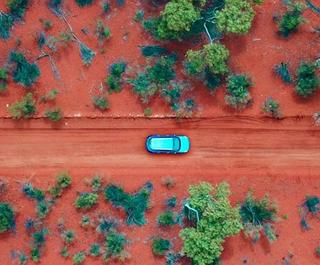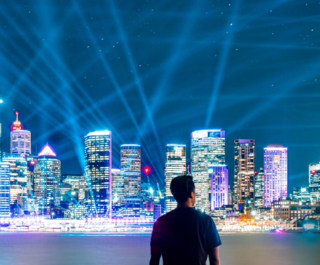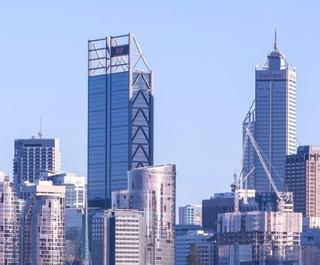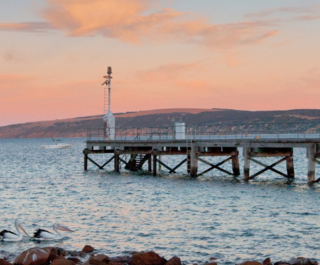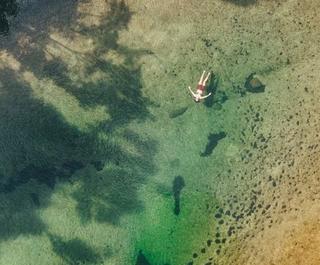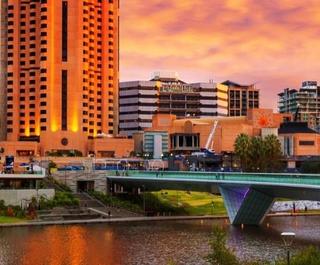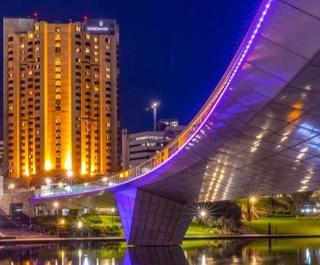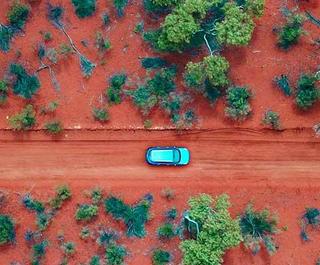
While motorhome holidays are a fantastic way to explore fascinating destinations by road, curious travellers may like to consider another, unique mode of self-transportation. A holiday on a houseboat can offer a peaceful and relaxing experience as you cruise along Australia’s beautiful waterways – admiring the scenery as you go. There'll be plenty of time for fishing, swimming, canoeing and even jet skiing. Houseboats are surprisingly easy to operate - all that's needed is a full car driver's license. Here are our recommendations for great waterways to hire a houseboat around Australia.
Murray River, South Australia and Victoria
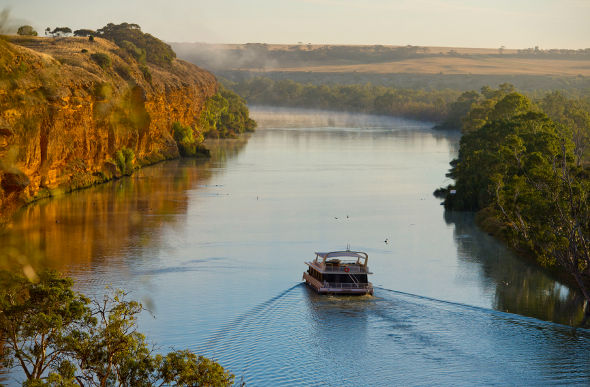 The Murray River. Image courtesy of SATC. Photographer Adam Bruzzone.
The Murray River. Image courtesy of SATC. Photographer Adam Bruzzone.
At 2,375 kilometres, the Murray River is Australia's longest river. This stunning waterway empties into Lake Alexandrina on the South Australian coast and is effectively used as the border between Victoria and New South Wales. When the river was named by Charles Sturt in 1830 after the British Secretary of State for War and the Colonies, he didn't realise that Hamilton Hume and William Hovell had named the same system the Hume River only six years prior. Popular places to collect your houseboat include Renmark and Mannum. As you cruise down the river keep an eye out for Murray cod, golden perch, Murray River crayfish and platypus.
Hawkesbury River, New South Wales
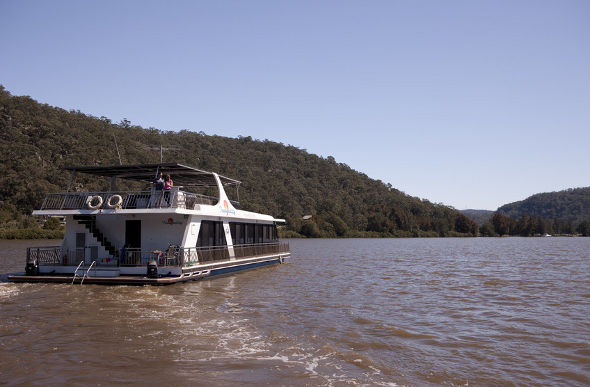 Hawkesbury River. Image courtesy of Destination NSW. Photographer James Pipino
Hawkesbury River. Image courtesy of Destination NSW. Photographer James Pipino
Governor Phillip named the Hawkesbury River in 1789 after Charles Jenkinson who at the time had the title of Baron Hawkesbury. For the fledgling colony it was one of the principle transportation routes, as the water system began at Broken Bay, just south of Gosford and encircled Sydney around to Penrith where it flows into the Nepean River. Wiseman’s Ferry is the best place to collect your houseboat.
Batemans Bay and the Clyde River, New South Wales
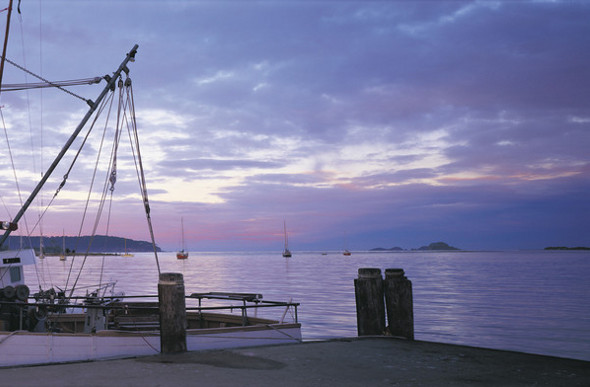 Batesmans Bay. Image courtesy of Destination NSW. Photographer Sally Mayman.
Batesmans Bay. Image courtesy of Destination NSW. Photographer Sally Mayman.
Travelling on a boat called Snapper in 1821, Lieutenant Robert Johnson navigated the Clyde River, which he named after the River Clyde in Glasgow. This picturesque estuary flows from the Budawang Mountains in the Great Dividing Range and is joined by nine tributaries before reaching its mouth at Batemans Bay, on the New South Wales south coast. Interestingly this is one of the last major river systems in eastern Australia that hasn't been dammed and has a reputation as being one of cleanest waterways in the country. Enthusiasts generally board their houseboat at Batemans Bay and cruise towards Nelligen and beyond.
Gold Coast Waterways, Queensland
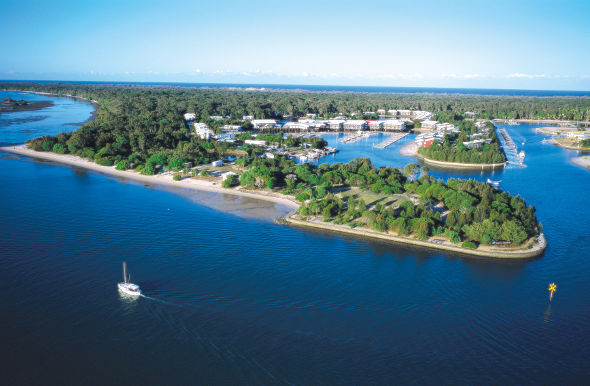 South Stradbroke Island. Image courtesy of Tourism Queensland. Photographer Murray Waite & Assoc
South Stradbroke Island. Image courtesy of Tourism Queensland. Photographer Murray Waite & Assoc
While many of the canals that weave around the Gold Coast are man-made, the Coomera River is completely natural. This south-east Queensland river was first discovered by Patrick Logan in 1827 and was originally called the River Arrowsmith after a London-based cartographic firm but was soon changed by the Surveyor General Thomas Mitchell to an Aboriginal name. The system flows from the Lamington National Park, passes Hope Island and weaves towards Coomera Island. Houseboat captains generally collect their vessel on the Coomera River and cruise along South Stradbroke Island after exploring the tributaries around Hope Island.
Mandurah and the Murray River, Western Australia
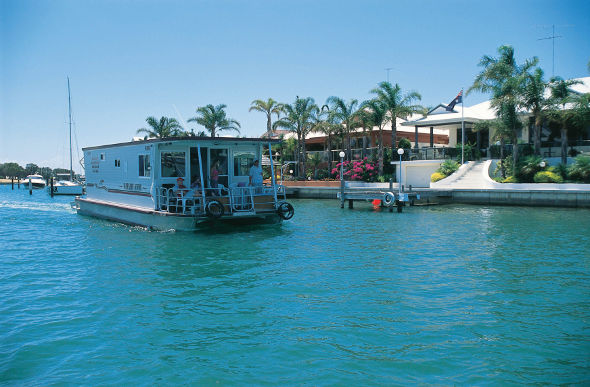 Mandurah. Image courtesy of Tourism Western Australia
Mandurah. Image courtesy of Tourism Western Australia
The Western Australian Murray River was named by Governor James Stirling after Sir George Murray, who was the Secretary of State in London in the early 19th century. This waterway begins at Mount Keats and flows 134 kilometres to the Peel-Harvey Estuary. To explore the Murray River, collect your houseboat at Mandurah, just south of Perth, motor into the Peel Inlet and journey up the river to Pinjarra.


